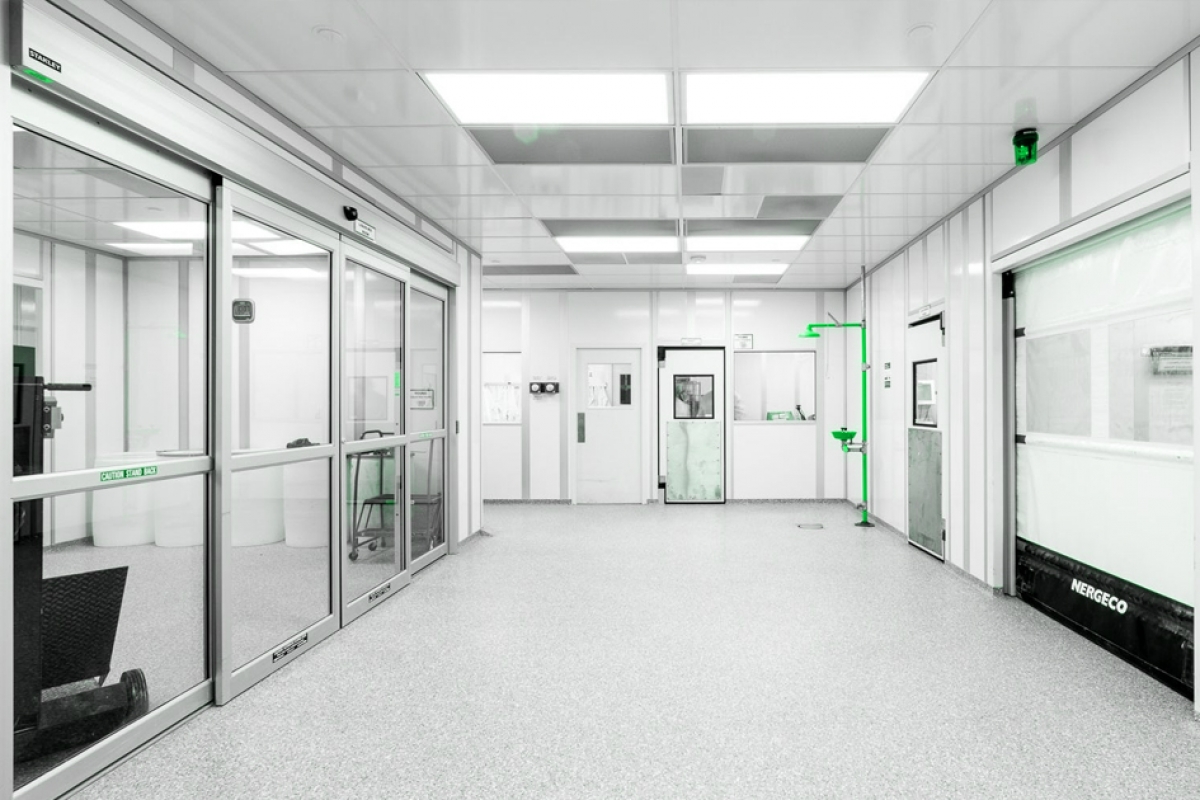
The World’s Best Cleanrooms
Cleanrooms are most commonly associated with scientific laboratories, but they’re used in a wide range of applications. In fact, cleanroom technologies are often utilized in manufacturing and computer server production to help support a sterile environment.
The air around us is filled with microbes, organisms, dust, pollen, and other particles that can contaminate the environment and people. Introducing foreign objects into specialized environments can damage equipment, skew data, and even risk lives.
Utilizing advancements in airflow, monitoring, filtration, and other technologies, modern cleanrooms are becoming much more advanced, easily achieving ISO standards and reducing potential damage caused by nanoparticles and microorganisms.
Advancements in Cleanroom Technology
Several technologies are combined to maintain the integrity of a cleanroom: HVAC, HEPA filters, air showers and diffusers, disinfectants, protective clothing, wipes, wall construction and specialized equipment are all necessary to continuously maintain a cleanroom.
Much like purchasing a personal computer or smartphone, it’s important to keep up with trends and research in cleanroom technology in order to invest in the best products possible for your specific needs. New processes and materials are constantly being created which can create less expensive, more durable products and achieve better overall performance.
Recent advancements in cleanroom technology include:
1. The Internet of Things
Thanks to companies like Tech Mahindra, IoT technology is being implemented to allow for remote monitoring, predictive analysis, and other innovative features throughout cleanrooms in every sector.
Automated data collection and analysis is made possible through connected sensors that connect wirelessly to a centralized network. This allows for continuous remote decision-making while robotic technology handles any of the manual tasks previously only done by people.
By reducing human intervention as much as possible, contamination threats and human errors are reduced which ultimately optimizes the entire process. In addition, spherical video and AR/VR technology opens the door to entirely new scenarios. Imagine medical students watching a live surgery from the classroom through an Oculus Rift headset.
Using IoT technology, organizations can monitor and control compliance in multiple locations using global regulatory standards. Air quality, temperature, and the presence of foreign objects can all be detected remotely, minimizing efforts to maximize results.
2. Nanoparticle Filtering
Air flow is an essential component of a functioning modern cleanroom. By forcing air through a series of filtration systems, cleanrooms are kept much safer from airborne contamination versus that of a natural environment.
Even in industrial and manufacturing settings, toxic industrial compounds are often introduced into the air and must be eliminated. HEPA filters are commonly used today, but Exceed Filters and others are already seeking new materials with more integrated nanostructures to absorb these toxic compounds.
Cleanrooms aren’t 100 percent efficient and take time to remove contaminants that may be present.
With nanoparticle filtering, this process becomes much faster and more efficient and the time it takes to decontaminate an area is greatly reduced. In addition, the new generation of nanoparticle filters combined with current HEPA and other filtration technologies will make tomorrow’s cleanrooms much cleaner than current technology allows today.
3. Biohazard Suits
The U.S. Department of Defense recently launched a $250,000 challenge to invent the next generation of protective gear. Although advancements in textile technology already keep us safe from fires, sparks, chemical spills, and germs than previous generations, we’re still pushing forward.
With such a large prize up for grabs, it’s only a matter of time before the protective clothing used today is made obsolete by lighter, more durable clothing with better designs to provide longer-lasting protection. Companies like DuPont already have synthetic textiles and designs that can protect workers in a wide range of environments. It’s only getting better.
From NASA to universities and hospitals around the world, this means a cleaner working environment where bodily fluids, dangerous chemicals, flames, viruses, and more threaten the health of those protecting and rescuing us. Tomorrow’s fabrics will last longer and need to be replaced less often, creating a better ROI for everyone involved.
Upgraded gear being worn by personnel needing to access cleanrooms less often will lead to overall increases across the board in cleanroom functionality. Of course, for this to happen, you’ll need to know where to find the best cleanroom technology.
Resources & Articles
CLIN ® "Resources" page is for individuals/companies seeking information on cleanrooms and controlled environments. Find Cleanroom News, Discussion Forums, Cleanroom Cleaning Recommendations, Cleanroom Terminology, Cleanroom Directory, and more.
Content Disclaimer
Information are contributed by/from different websites and all credit goes to its respective owners/writers/websites/companies and etc, and while we endeavour to keep the information up to date and correct, we make no representations or warranties of any kind, express or implied, about the completeness, accuracy, reliability, suitability or availability with respect to the website or the information, products, services, or related graphics contained on the website for any purpose. Any reliance you place on such information is therefore strictly at your own risk.
In no event will we be liable for any loss or damage including without limitation, indirect or consequential loss or damage, or any loss or damage whatsoever arising from loss of data or profits arising out of, or in connection with, the use of this website.
Through this website you are able to link to other websites which are not under the control of respective owners/writers/websites/companies and etc. We have no control over the nature, content and availability of those sites. The inclusion of any links does not necessarily imply a recommendation or endorse the views expressed within them.
Every effort is made to keep the website up and running smoothly. However, CLIN ® takes no responsibility for, and will not be liable for, the website being temporarily unavailable due to technical issues beyond our control.











